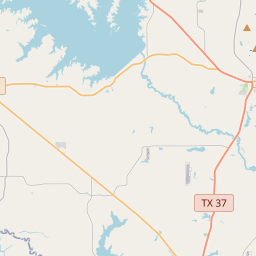Reuben Leon and Fairess (Clark) Simmons
Historical marker location:






Reuben Leon Simmons and his wife Fairess (Clark) served as educators in public schools for a combined 83 years. Reuben Leon Simmons was born in 1894 in the Forest Home community (Wood Co). After the death of his father, Simmons and his family moved to Pleasant Grove, where he left school after the third grade to work on a farm. Determined to finish school and become a teacher, Simmons entered the Quitman School District in 1914, later securing a teaching certification. He first taught at Wayside before returning to Forest Home. In 1926, he married Fairess Clark of the Bellefonte community; they would have three sons. Fairess was born in 1903 in Wood County. She attended East Texas State Teachers College in Commerce (Hunt Co.), receiving teaching certification. In 1930, Reuben was selected to become superintendent of schools in Golden. He served in this capacity until 1947, overseeing changes including major renovation to Golden High School. In 1938, he received an M.B.A. degree from the University of Texas at Austin. Fairess taught English in Golden High School. While here, the couple was highly involved in civic and church affairs; Fairess served as pianist at Golden Baptist Church. in 1947, the couple moved to Travis County, where Reuben Leon became superintendent for the Manor School District. He served in this position until his death in 1954. Fairess continued to teach in Manor and later at Del Valle High School; she also received a master's degree from the University of Texas at Austin. She retired in 1973 and died in 1990. Today, Reuben Leon and Fairess Simmons are remembered as educators, parents, and church and community leaders who influenced generations of residents and students in Wood County and throughout Texas. (2008) Marker is property of the state of Texas
As one of the most visible programs of the Texas Historical Commission (THC), historical markers commemorate diverse topics in Texas history, including: the history and architecture of houses, commercial and public buildings, religious congregations, and military sites; events that changed the course of local and state history; and individuals who have made lasting contributions to the state, community organizations, and businesses.
Texas is known for its love of football, and the state has produced many great football players, including legends like Tom Landry, Earl Campbell, and Vince Young.
In the early 1800s, the region attracted settlers from the United States who were drawn to the lush forests and abundant resources. The first permanent European-American settlement was established in 1846, and it was named Quitman after John A. Quitman, a prominent politician of that time.
During the Civil War, Wood County played a significant role in supporting the Confederacy. Many residents enlisted in the Confederate Army, and the area became a center for military recruitment and training. After the war, the county suffered economically, but with the introduction of the railroad in the late 19th century, the economy began to recover.
Wood County's economy primarily relied on agriculture, with the growth of cotton, corn, and timber industries. The establishment of sawmills and the development of the timber industry brought prosperity to the area. In the early 20th century, the discovery of oil and gas reserves further fueled the county's economic development.
Today, Wood County continues to be an important agricultural and industrial center in Texas. The county's history is evident in its charming small towns, historic sites, and natural beauty. The strong sense of community and appreciation for the region's heritage are still evident today, making Wood County a vibrant and inviting place to visit or live.
Wood County Timeline
This timeline provides a concise overview of the key events in the history of Wood County, Texas.
- 1850: Wood County is established by the Texas legislature.
- 1852: The first courthouse in Wood County is built in Quitman.
- 1860: The population of Wood County reaches 4,867.
- 1875: The railroad reaches Wood County, boosting economic growth.
- 1895: The county seat is moved from Quitman to Mineola.
- 1920: The population of Wood County peaks at 19,109.
- 1930: The Great Depression hits Wood County, causing economic hardship.
- 1958: Lake Holbrook is completed, providing a recreational area for residents.
- 1970: Wood County's population decreases to 12,230.
- 1983: Holly Lake Ranch, a gated residential community, is established in Wood County.
- 2000: The population of Wood County surpasses 37,000.
- 2019: Wood County experiences steady growth and continues to be a thriving community.